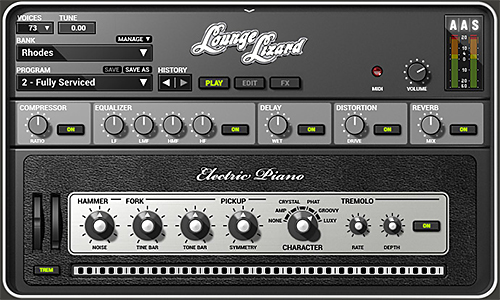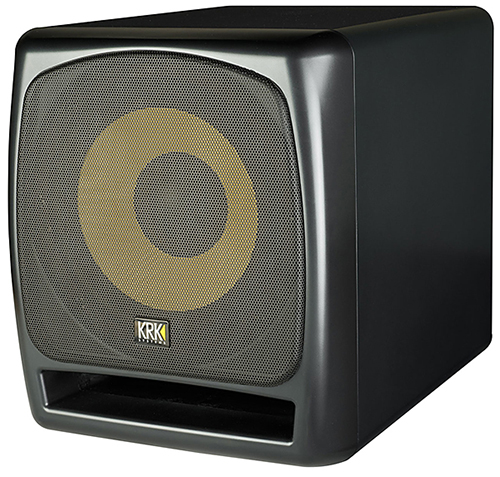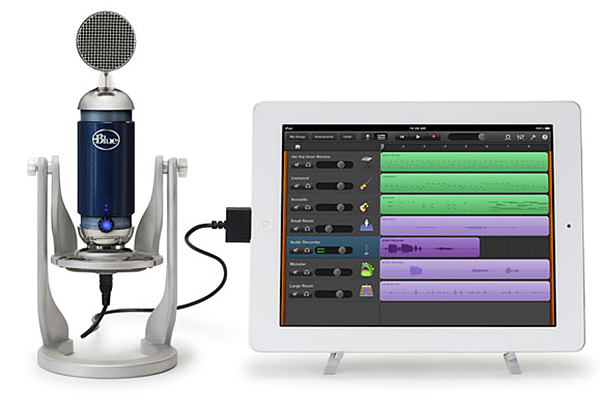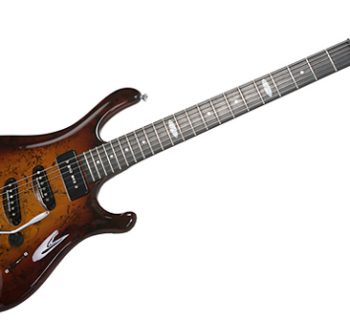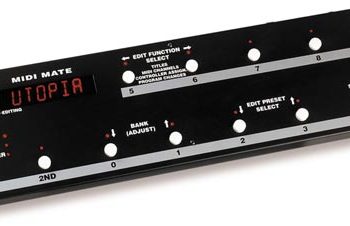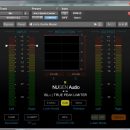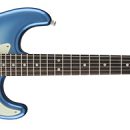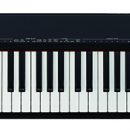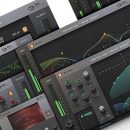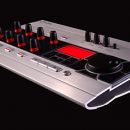 We previously reviewed AAS Lounge Lizard EP-3 a few years back, quite favorably. It was easy to tweak, had great Rhodes, Wurli, and “experimental” keyboard sounds, and only took up a very small hard drive footprint thanks to modeling technology instead of multi-gigabyte samples. Now we’ve got EP-4, and it’s a worthy upgrade.
We previously reviewed AAS Lounge Lizard EP-3 a few years back, quite favorably. It was easy to tweak, had great Rhodes, Wurli, and “experimental” keyboard sounds, and only took up a very small hard drive footprint thanks to modeling technology instead of multi-gigabyte samples. Now we’ve got EP-4, and it’s a worthy upgrade.
With more sounds, more effects, and a new interface for better organization (just a small gripe about the on-screen virtual knobs being a little small), there’s even more to like than before. If you were a fan before, you’ll like it even more now! We certainly did.
Please see our EP-3 review for an in-depth look at Lounge Lizard; here we will focus on the new features of EP-4 version 4.0.1:
The interface was previously split across two screens; now it is three. The Play screen, pictured above, is where you select your presets and have access to basic parameters. The Edit screen gives you access to fine-tuning, including hammer stiffness, noise, pickup, tine, and damper parameters, as well as the tremolo control (an essential ingredient for many electromechanical piano recordings). Finally, the FX screen provides access to effects, including the equalizer, compressor, delay, chorus, reverb, wah-wah, phaser, distortion, and notch filter.
Within each screen, there are some new things from the previous version. The most obvious is that there are more sounds! Over 200 presets are included to get you started. We appreciated that the names themselves are now a little more descriptive than before (instead of Rhodes 1, Rhodes 2, etc.) and there is a Manage button that reveals a pull-down menu to quickly access the preset you want. Included are a compressor, equalizer, limiter, and new effects, and we liked the new “character” control which gives the choice of five emulations of signal paths: the cabinet, preamp, microphone and recorder chain that follows the piano output.
Installation was painless, and the install consumed less than 12 MB, which is remarkable considering all the multi-gigabyte sample libraries out there.
We did wish that some of the virtual, on-screen knobs and their labels were larger. However, you can make the argument that if you MIDI assign them to a controller, you will be using a hardware control instead of the on-screen control, so it becomes less of an issue. Alternatively, if the window allowed for user re-sizing, that could help too. A small gripe, for sure, but something that we suspect a number of users would appreciate.
In the center of the application window, there is a little arrow you can click which reveals… a manual! It gives some history of electromechanical pianos, and of course the use of the software itself. At 52 pages, it’s one of the more complete manuals out there, which is ironic given how limited your need for the manual actually is with this easy-to-use soft synth.
As we said earlier, if you liked EP-3, you’re going to really like EP-4. For those who are new to Lounge Lizard, you really should check it out. While everyone’s taste is different when determining what the “best” sound is, EP-4 gives you plenty of great-sounding presets, which are all editable to your taste. As in previous versions, there is a “Classic Tracks” section for you to choose pianos emulating famous recordings from Led Zeppelin, The Doors, Queen, and Supertramp. Good stuff, with the very welcome addition of modern effects processing.
Price & Contact Information
Lounge Lizard EP-4: $199 USD.
Upgrades from EP-1, -2, -3: $39.
Apple Acoustic Systems
www.applied-acoustics.com

